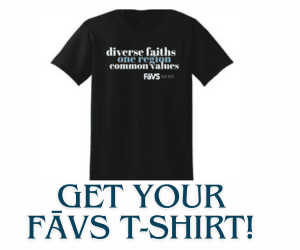Our Backyard and Other Holy Sites
Commentary by Walter Hesford
On the eve of Orthodox Easter, I read Hiba Yazbek’s article, “At Christianity’s Holiest Site, Rival Monks Struggle to Turn the Other Cheek.” This site is the Church of the Holy Sepulcher in the Old City of Jerusalem, a church that huddles over the place where, according to tradition, Jesus was crucified, buried and rose from the dead. Yazbek, a Palestinian reporter, describes the historic and on-going conflict between Egyptian and Ethiopian monks over control of a small monastery built on the roof of Holy Sepulcher, this holiest site.
But is this really Christianity’s holiest site? Does Christianity even have a holiest site? I thought that we Christians believed that since God and God’s Beloved Son loved the whole world, the whole world was holy … even our weedy backyard.
I’ve been beheading a host of dandelions in this backyard in preparation of what I hope will be a host of late spring, summer and early fall gatherings of family, neighbors and friends. Here we will have some interfaith Theology on Tap discussions. We will sit around an old picnic table, considering our relationship to whatever birds may bless us, surrounded by a ponderosa, several aspen, a vine maple, a mountain ash, a walnut, a cherry, a birch snag, a lilac bush and other flora that help block out street noise and the rays of the sun, if it appears.
What Makes a Site Holy?
Dusk is my wife’s favorite time for our backyard gatherings. She hangs lanterns in the trees, lights candles on the picnic table. We share memories and tell stories as the evening primrose blooms and the stars come out.
In “The Sacred Place: Witnessing the Holy in the Physical World,” W. Scott Olsen sees his backyard at twilight as holy, enriched by stories past and present of his family, his neighbors and his friends gathered there. “This, I believe, is what we mean by a sacred place,” he concludes. “A place where the stories get larger. A place where our own story meets, and joins, the stories of other people, animals, other needs, others.”
I like this definition of a holy site as one created by a confluence of stories. But what if the stories conflict? What if the site becomes one of seemingly never-ending conflict, as it has for Jerusalem’s Church of the Holy Sepulcher, for Jerusalem itself and, indeed, for the whole so-called Holy Land?
The great Palestinian poet Mahmood Darwish titled his 2003 collection, “Unfortunately, It Was Paradise.” Ironically comparing his blood-soaked and occupied homeland to that once and future mythic holy site, Darwish bears witness to the destructive potential of competing claims to historic holy sites.
Restoring Holy Sites
So, should we then dismiss claims to deeply historic holy sites as too problematic? No, since this would be to cancel the rightful claims of Indigenous people throughout the world and especially in the United States where the dominant culture has for centuries destroyed and occupied sites sacred to the original inhabitants of the land in an attempt to cancel their dynamic cultures. Restoration and preservation of these sites are vital to the spiritual and physical welfare and health of these people and the rest of us as well, promoting respect for the land and those who dwell within it.
According to the American Heritage Dictionary, the Indo-European root of holy is “kailo-,” important derivates of which are whole, wholesome, health, heal and hallow, as well as holy. Yes, the whole world is holy, but we need specific holy sites set aside for our well-being. May each of you have such a site, a go-to place for being whole, holy. Maybe it’s a yoga mat, maybe a quiet creek, maybe a crowded mosque. For me, it’s a backyard with a picnic table.








You certainly ask the right question: “What makes a site holy?” I remember visiting the spring of Aglona in Latvia whose nuns claimed its water bubbled up “from the Vatican” and that whoever drinks of it will become a saint. But in the biblical context of Christianity, the idea of holy sites may well be misplaced and even laden with local superstition. After all, Y’shua told the woman at the well in Sychar, “An hour is coming when neither on this mountain (Gerizim) nor in Jerusalem (Moriah) will you worship the Father.” (John 4:21) So if people reconsecrate a site like the Church of the Holy Sepulchre, perhaps conflicts between factions become inevitable, rendering that which is to be regarded holy as anything but. And what did the early Christians look to as a holy site by the end of the 1st Century? “And he showed me the Holy City coming down out of heaven from God” (Apocalypse of John 21:10). It appeared without a naos (shrine) for “the Lord God the Almighty is its shrine and the lamp of it is the Lamb. (verse 22). Whether one may believe the “New Jerusalem” is a literal place or a figurative state, the result is the same. Christianity doesn’t depend upon physical sacred sites to be Christianity.
But making any place a sacred space comes down to a matter of consecration. i.e. where we sense some inward calling to set aside the site as special for divine communion. The idea of a temple as a “hieron” or a priest as a “hiereus” echoes this idea. In both cases, it demands some form of sacrifice. While, in a Christian context, this no longer involves the blood of a victim, it does demand a sacrificial special care on our part, whether it’s to dress and keep a garden in your backyard as a place of meditation, doing so with a mountaintop retreat, or if we dare to cooperate with one another to reconsecreate the Church of the Holy Sepulchre. And if we actually do this consistently, then the entire Earth can likewise become holy.